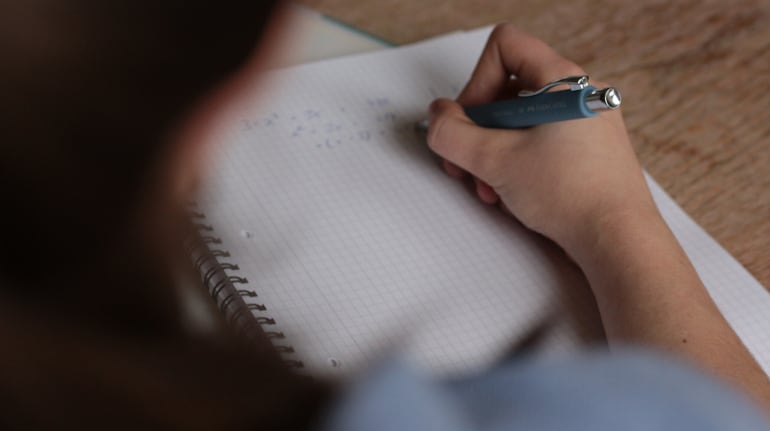The most important thing about the New Education Policy (NEP) is that it will provide breakfast in schools. The policy says, ‘research shows that the morning hours after a nutritious breakfast can be particularly productive for the study of cognitively more demanding subjects and hence these hours may be leveraged by providing a simple but energizing breakfast in addition to midday meals.’
Why is breakfast so important? To understand that, consider the history of education in this country. For the first twenty years after independence, the government was busy trying to fill the bellies of children with food, rather than their brains with education. They reckoned, correctly, that it was only if the kids stayed alive that they could study. That was why the National Policy on Education was formulated only in 1968.
Understandably, kids did not take kindly to being herded into schools and the government was at its wit's end trying to figure out how to round them up. Around thirty years later, they hit upon the brilliant idea of providing lunches to kids in school and a national mid-day meal programme was launched in 1995. Twenty five years later, the government has succeeded in getting the kids into school, but is unsure about a) making them do something there, apart from having lunch and b) how to prevent them from dropping out.
That is why breakfast is so important. Some high official must have figured out that if lunches can get the kids to school, breakfasts might make them predisposed to learning something.
The incentive system can be structured thus: vada paav if the kid learns addition or subtraction, steaming hot idlis for multiplication, crisp dosas for writing essays, all the way up to aloo parathas for calculus and pate de foie gras for reading Shakespeare. The strategic value of the promise of a laddoo or ice-cream on a child’s mind should not be underestimated. For college students, there is the trusty Old Monk, friend, philosopher and mentor to generations.
But the wise men who design our education policies know that man does not live by breakfasts alone. That is why, while kids entered the school system at age 6, they will now be caught at age 3. What will happen to them once they are successfully trapped? The policy document says, ‘ECCE (Early Childhood Care and Education) ideally consists of flexible, multi-faceted, multi-level, play-based, activity-based, and inquiry-based learning, comprising of alphabets, languages, numbers, counting, colours, shapes, indoor and outdoor play, puzzles and logical thinking, problem-solving, drawing, painting and other visual art, craft, drama and puppetry, music and movement. It also includes a focus on developing social capacities, sensitivity, good behaviour, courtesy, ethics, personal and public cleanliness, teamwork, and cooperation.’ In plain English, the poor kids have had it. The advantage in catching them so young is that, unlike the six-year olds, they won’t be able to run away.
But that’s a temporary solution. What happens when the kids grow up a bit? Won’t they rush for the nearest exit then? The solution is simple—make exams easier. You will say that state education boards, in an effort to show how well they have taught their students, already ensure that most students pass. Clearly, they are not doing enough. The new policy says, ‘any student who has been going to and making a basic effort in a school class will be able to pass and do well in the corresponding subject Board Exam without much additional effort.’ There, in a nutshell, is the incentive—all you have to do is make an effort to attend school, so that we can show low drop-out rates and we’ll make you pass. As for school exams, the policy clearly says, ‘The results of school examinations will be used only for developmental purposes of the school education system.’ That should put to rest the unsettling rumour that school exams may actually test the kid’s knowledge.
A curmudgeon could argue that this doesn’t solve the problem of children not learning anything in school. But this wonderful education policy has a solution for that too. It says, ‘Holistic development and a wide choice of subjects and courses year to year will be the new distinguishing feature of secondary school education. There will be no hard separation among ‘curricular’, ‘extracurricular ’, or ‘co-curricular’, among ‘arts’, ‘humanities’, and ‘sciences’, or between ‘vocational’ or ‘academic’ streams.’ In other words, kids can now opt for subjects like learning rap music—preferably in Sanskrit, body-piercing, how to make the Indian equivalent of TikTok videos, tattooing and so on in school.
True to our ancient traditions, the NEP recommends kids learn from Banabhatta’s 64 kalaas or arts. As you no doubt know, Banabhatta was the poet in the court of King Harshavardhana, who wrote one of the world’s first novels—Kadambari. While the NEP mentions that these kalaas include carpentry, medicine, engineering and debate it is coyly silent about some of the most important of these 64 arts. For instance, Wikipedia tells me these included pralapana, or ‘knowing conversation between male and female cockatoos’, udaka-ghata, or ‘splashing with water’, nirmiti-jnana: knowing prediction by heavenly voice, dyuta-visesha: knowing specific gambling, dharana-matrika: the use of amulets, vastra-gopana: concealment of cloths and mesha-kukkuta-lavaka-yuddha-vidhi: knowing the mode of fighting of lambs, cocks and birds. These multi-disciplinary holistic activities should be enough to keep the kids glued to school.



